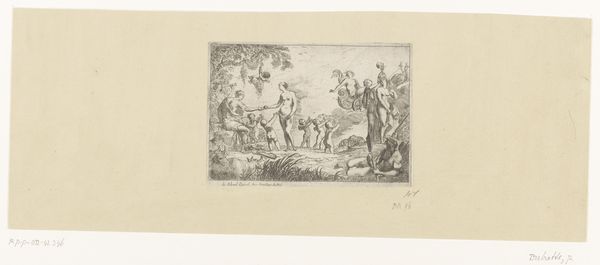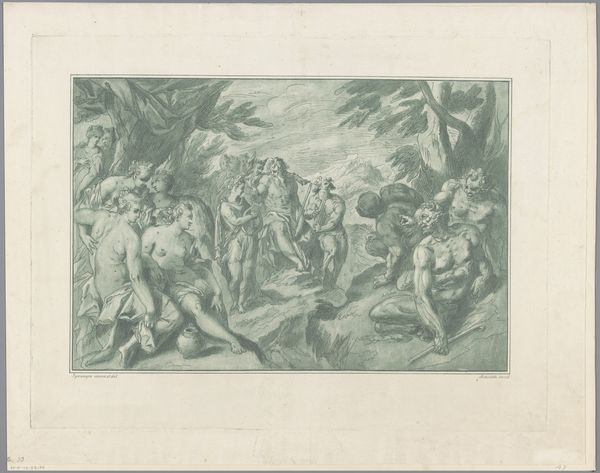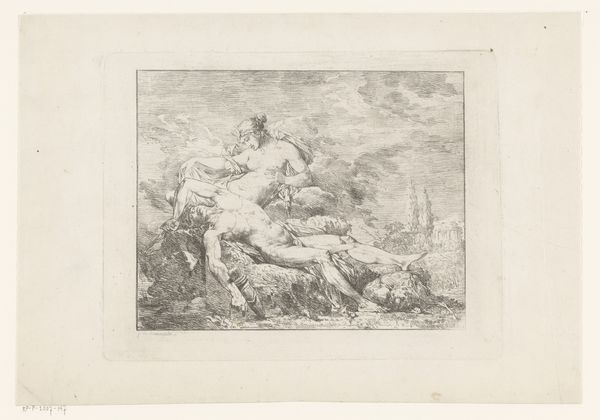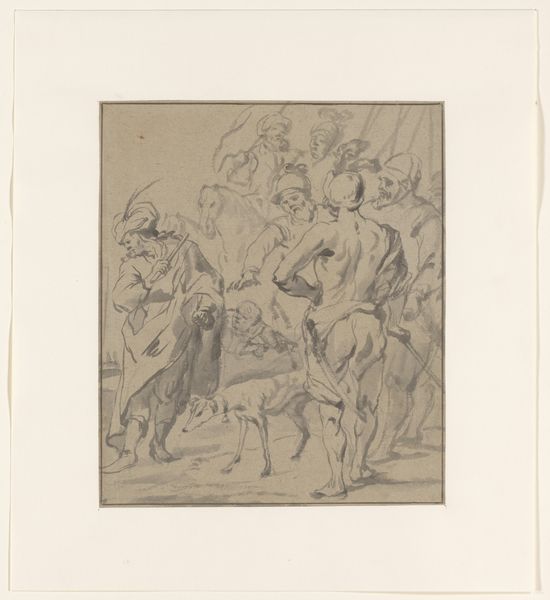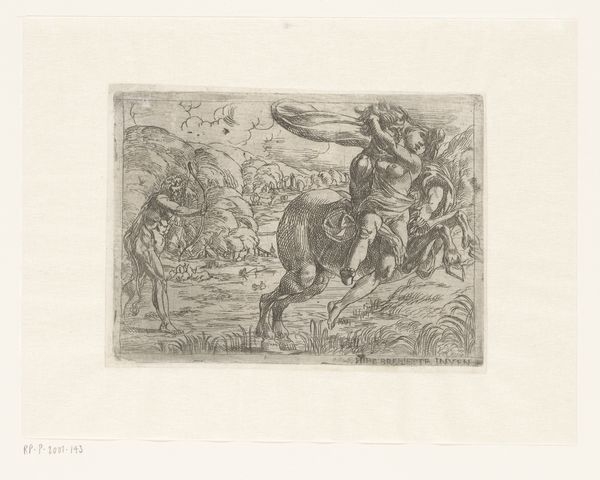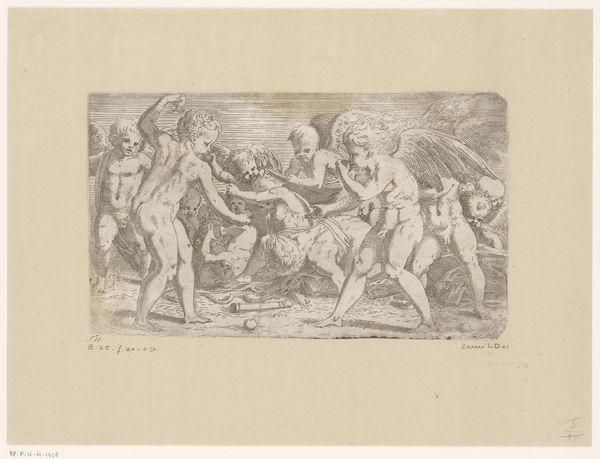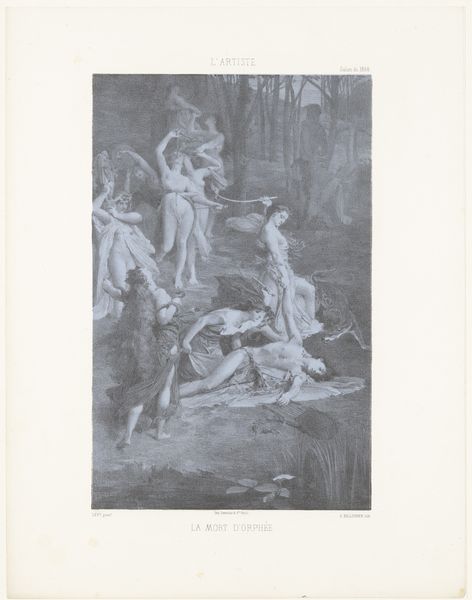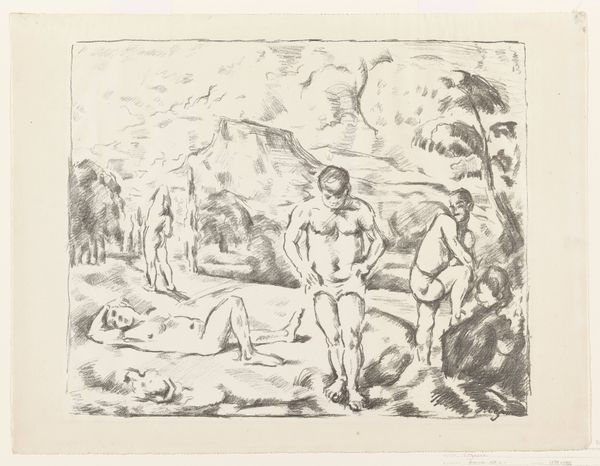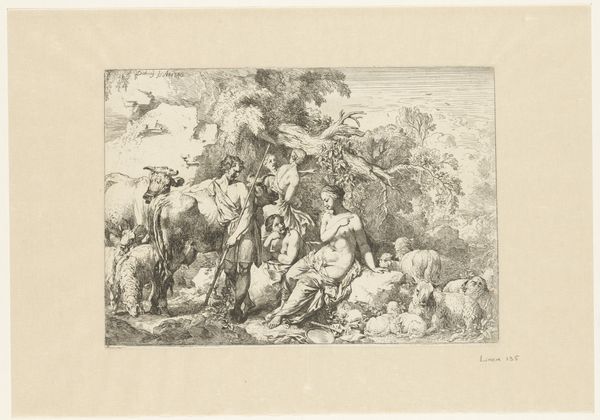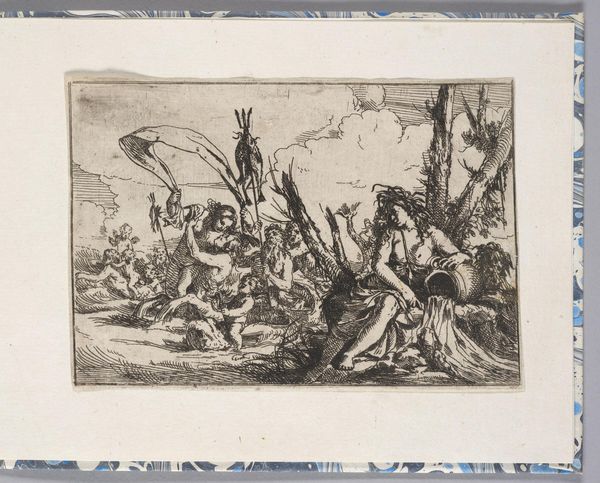
print, intaglio, engraving
#
allegory
#
baroque
# print
#
intaglio
#
old engraving style
#
linocut print
#
ink drawing experimentation
#
pen-ink sketch
#
history-painting
#
nude
#
engraving
Dimensions: height 132 mm, width 190 mm
Copyright: Rijks Museum: Open Domain
Editor: Here we have Pierre Brebiette’s “Diana op jacht,” dating from 1608 to 1650. It's an engraving, quite small, but packed with figures in this outdoor scene. It seems to capture a very specific moment; everyone's posed and mid-action. What catches your eye when you look at this print? Curator: This print resonates with the weight of classical symbolism, doesn't it? Diana, the Roman goddess of the hunt, is central. Look at how the figures are arranged - that's no casual gathering. Do you see how the reclining figure on the left, separated from the group, and the huntresses, actively engaged, create a visual and perhaps symbolic dichotomy? One wonders, is she being ostracized, or does she represent a different aspect of Diana's nature? Editor: That’s interesting – a dichotomy between activity and repose. The reclining figure certainly feels very different from the active huntresses. What about the city in the background? Curator: Yes, the backdrop offers another layer. Is that city representing civilization encroaching on the natural, wild domain of Diana? Is Brebiette suggesting a tension between these two worlds, a comment on the shifting cultural landscape of his time? Remember, allegory was a popular tool - these images aren't merely decorative; they’re imbued with layers of meaning. Editor: So the image speaks to more than just a mythological hunt. It's about civilization, nature, and perhaps even the different facets of femininity represented through Diana. I'll definitely remember to look beyond the surface narrative when engaging with similar works. Curator: Indeed. Visual symbols serve as memory triggers for the viewer; each element contributing to a narrative reflecting enduring cultural anxieties and aspirations. This image is far more than an engraving; it's a mirror reflecting the hopes and fears of its era.
Comments
No comments
Be the first to comment and join the conversation on the ultimate creative platform.
